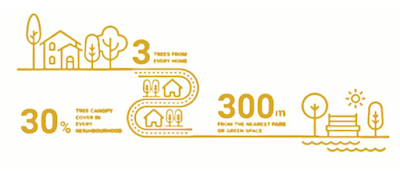By Vitaly Matveev and Bruno Ricardo Faustino Mesquita
The concern with environmental degradation and future quality of life has become part of public debates and activism worldwide. More than ever before, human societies are faced with a fix-it or face-a-catastrophe situation, as warned by successive IPPC reports. Unsurprisingly, the topic has gathered increasing air time on TV, radio, podcasts, the written press, and scientific publications for a general audience. In this latest category, Jason Hickel recently released the book Less is More: How
Degrowth Will Save the World.
Jason Hickel is an economic anthropologist, with roots in Africa, focused on issues of global inequality and ecological economics. He teaches in the Institute for Environmental Science and Technology at the Autonomous University of Barcelona, and he is also a visiting senior fellow at the International Inequalities Institute at the London School of Economics, in addition to regularly contributing to global news outlets, like The Guardian and Foreign Policy.
His most recent book, from 2021, explores the causes of the climate breakdown and ecological disaster, while proposing a way out of it. The book starts with a clear eyed review of evidence of the collapse of interconnected natural systems on which humans depend on to live. For instance, evidence for the 6th epoch of mass extinction and loss of biodiversity, in which the rate of species extinction is 1000 faster than before the industrial revolution; extreme weather events and rising temperatures that reduce agricultural yields; among others. Consequently, the collapse of global ecosystem services will have unavoidable impacts on urbanized human societies and beyond.
Hickel proposes that our economic system, capitalism, is at the source of planetary change. Capitalism depends on constant growth in order to maintain itself (otherwise there will be crisis and economic depression), which requires ever increasing extraction, production and consumption. The problem is that the desired growth rates of 2% to 3% yearly are exponential curves. A 3% yearly growth means doubling the size of an economy every 23 years, with obvious consequences on the exponencial pressures on resources and nature to absorb pollutants. Additionally, Jason Hickel points out that this growth overdrive is linked primarily to high-income countries, where growth is completely decoupled from any concept of human need or human flourishing, creating a situation of extreme global economic and environmental inequality.
What is the solution then? From a systemic perspective, the only way to effectively halt and reverse environmental catastrophe is to abandon the idea of growth, and instead embrace degrowth. Any policy measures or technologies that do not tackle the structural imperative of economic growth are doomed to fail or, at least, fall short. But are we, as societies, ready to question growth? Apparently, yes. It has been shown that people prioritize environmental protection over growth across countries.
Degrowth (or post-capitalism) proposes that income and resources are more equitably distributed, while downscaling energy and resource use to be in balance with the living world. By tackling inequalities and reducing pressures over the planet, it is possible to sustainably distribute resources worldwide to sustain general well-being and human flourishing, without the current, negative impacts. After all, why did the richest 1% need to absorb 28% of all new global income in the past 40 years? Jason Hickle’s degrowth idea proposes that we implement economic and social measures that reorganize the economy around human needs, instead of growth, but also that we change our ethos.
For instance, one of the reconsiderations we could make to transition to degrowth is precisely an ethical one: our perception of nature and our relationship with it. Legal personhood is given and used by corporations to defend their interests, including in the political arena. If companies such as Shell or Google can lobby and be legal political actors, why shouldn't parks, rivers or forests be granted the same right to do so? An equitable approach to nature, as a separate legal entity that doesn’t belong to anyone, including governments and corporations, could change the way we perceive its relationship to human society. Recognising the rights of Mother Earth to life, the right to regenerate its biocapacity and existence free from pollution, and the right to harmonious coexistence with everyone could be a starting point to get away from the exploitative capitalist logic. In the context of urban areas, nature plays a crucial role in urban living, providing environmental benefits to residents that compete with imperatives of accumulation. Giving legal personality to places like urban forests, parks or water systems as representative entities of nature would recognize their legitimate interests beyond just being objects of exploitation, and more in line with traditional animistic views that recognize nature as a form of personhood. It would also give greater voice to local concerns regarding the role they play for communities.
The story of Whanganui River in New Zealand has recently set this idea in motion. Generations of indigenous Māori people have fought to gain recognition of the river as a single indivisible entity which their community relies on. Under a law adopted in 2017 the river and all its physical and metaphysical elements were considered a legal person, which should protect its natural resources from sewage pollution and gravel extraction. This legal construct translates Māori world views into treating the river as equal, giving back at least as much back as taking from it. Not surprisingly, it is estimated that 80% of the planet’s biodiversity is in areas curated by Indigenous peoples.
Changing our relationship with nature by challenging capitalism's ethos is one of the main arguments made by Jason Hickle. Giving legal personhood to our urban nature is therefore a chance to imagine and experiment with a degrowth system, where the Earth’s natural resources are used in respect to its reproductive capacity and harmoniously coexist with humans. Cities are often seen as the test tubes of public policy. Why not use our cities to demonstrate how a new, degrowth paradigm can be a potent form of urban greening and ecosystem restoration in cities?









